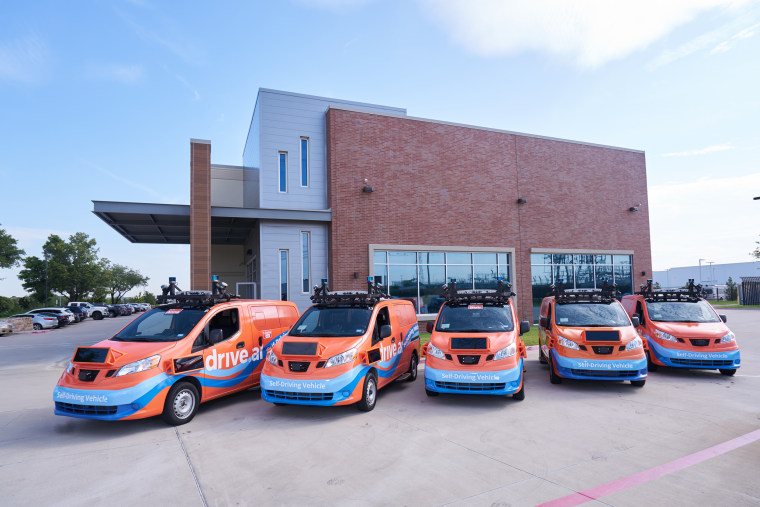From the outside, many driverless vehicles now on American roads look a lot like their conventional, human-driven counterparts.
But one self-driving vehicle being tested as part of a new pilot program in Texas is designed not to blend in but to stand out — and in a big way. Its bright orange exterior is emblazoned with the words “Self-Driving Vehicle,” and it features billboard-like LED displays that alert nearby motorists and pedestrians with heads-up messages like “going now, don’t cross” and “waiting for you.”
“We want people to know that they’re around a self-driving vehicle, which by its nature does not behave like a human driver,” Bijit Halder, the product development and deployment lead for Drive.ai, the Mountain View, California, firm that developed the heavily modified Nissan NV200 vans, told NBC News MACH in an email. “That’s why we deliberately chose to make our vehicles bright orange; we want them to stand out.”
On Monday, Drive.ai launched the six-month pilot program in Frisco, Texas, a fast-growing city of about 180,000 near Dallas. People in a small section of Frisco are able to use a smartphone app to hail the vehicles and ride them free along fixed routes, Dallas News reported. The cars are geo-fenced, meaning they are limited by onboard GPS gear from venturing outside the area.
People who had seen the vans “have found them to be an encouraging and comforting measure to lift the curtain on self-driving cars and what they’re ‘thinking,’” Halder said.
Alex Epstein, director of transportation safety for the National Safety Council, likened the displays to the “student driver” signs that let road users know that “this vehicle may behave and will probably behave differently.”
He said the vans’ unusual design could help prevent collisions, though Drive.ai seems not to be taking unnecessary chances. Each of the vans has a safety driver who is supposed to take control in case of a problem, although the company plans to replace the drivers with front-seat chaperones who can explain the vehicles' operation to passengers, according to a Drive.ai statement.
Drive.ai’s pilot program is one of a handful of similar ride-hailing programs now underway across the country, according to The Verge. Others include Waymo, which has a program in Phoenix, and Lyft and Aptiv, which have programs in Las Vegas.
Uber plans to resume testing its self-driving cars in Pittsburgh this summer after suspending the program in March after one of its cars killed a pedestrian in Tempe, Arizona, CNBC reported.

